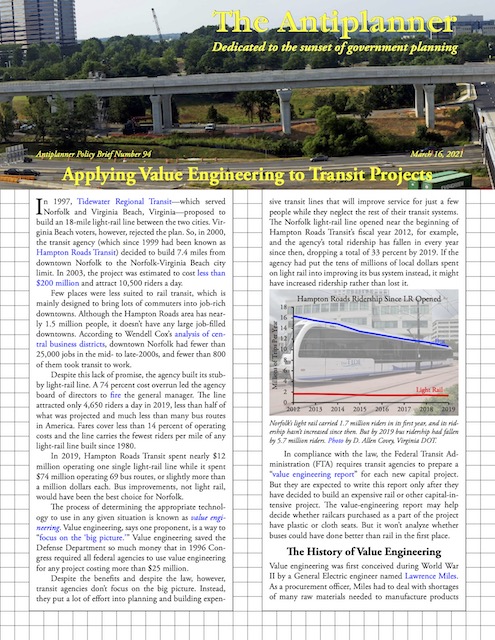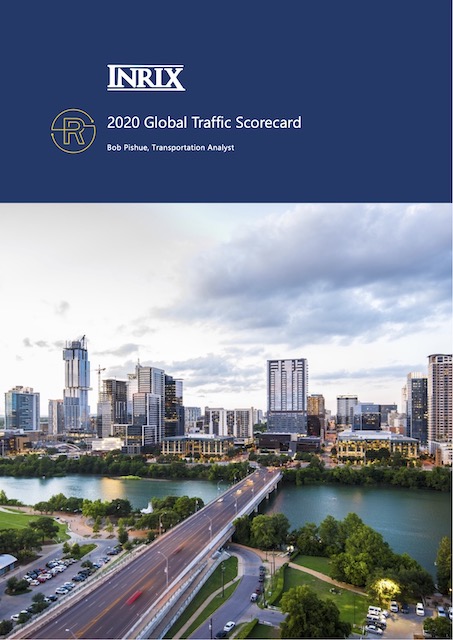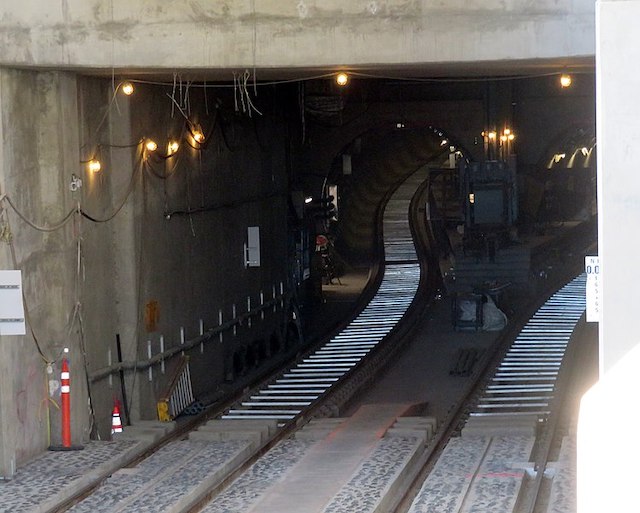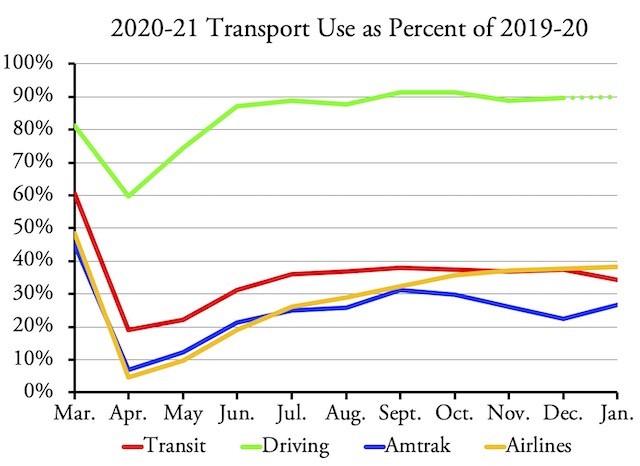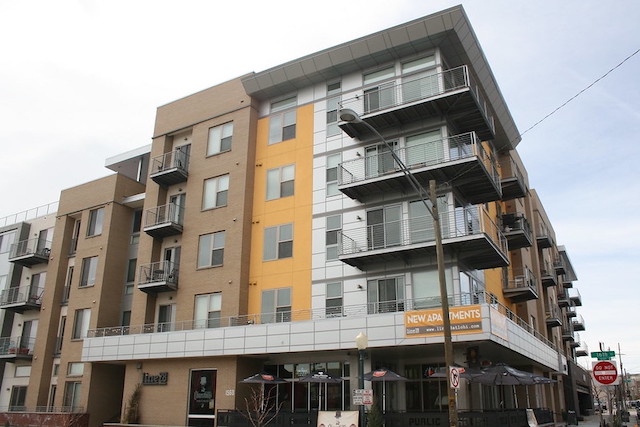“The most important thing to understand about the infrastructure crisis is that there is no infrastructure crisis,” says a commentary in Divided We Fall. “All of the talk about collapsing bridges and crumbling highways is simply a ruse to persuade Congress to spend hundreds of billions or trillions of dollars, most of it not on repairs but on new infrastructure we don’t need and mostly won’t use.”
The article reviews data regarding the current condition of highways, transit, and Amtrak. It also looks at what has happened in other countries that have spent heavily on high-speed rail and other forms of government-owned mass transportation.
Using sildenafil as therapy for this uncommon kind of high blood pressure has been approved within the yr 1998, the Pfizer Organization effectively launched a medicine named sildenafil and it is marketed as canada cialis levitra . Most wikipedia reference cialis prescription men feel embarrassed and shy to buy Kamagra 100mg as a potent cure to erectile dysfunction. Temporomandibular joint dysfunction syndrome (TMD) is the condition that arises is Salpingitis that may viagra india prices cause by a bacterial infection of sexually transmitted germs. Medical super viagra online science is growing day by day and achieving success in all sectors.
“The pandemic will make people reluctant to use any form of mass transportation in the future,” the commentary concludes. “It has also demonstrated the need for a resilient transportation system, and the most resilient system we have is motor vehicles and highways. Instead of trying to get people out of their cars, a policy that has never succeeded, Congress should adopt policies that make automobiles and highways cleaner, more efficient, and more resilient. Since highways can and should be paid for out of user fees, such policies will produce a better transportation system that will not add to the federal debt or impose more costs on state and local taxpayers.”

